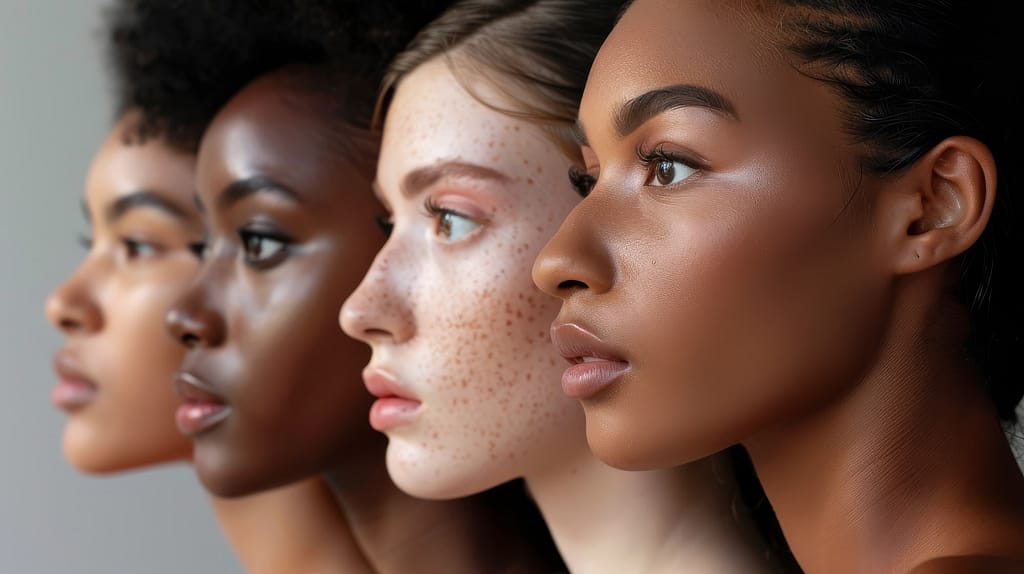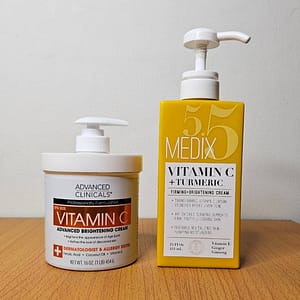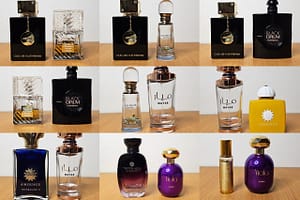Skincare is all the rage right now. One major reason for its popularity is that there are more skincare products available on the market today than there ever was. However, in the quest for healthier skin, lots of people make the mistake of using products without understanding their skin type.
Starting a skincare journey without knowing your skin type may lead to buying products that are unsuitable for your skin. Besides wasting your money, this may trigger a new or further worsen an existing skincare condition or concern. By first understanding your skin type, you can make informed decisions on how to care for it.
The different skin types
There are 4 primary skin types, namely
- Normal skin
- Oily skin
- Dry skin
- Combination skin

Your primary skin type is based on the amount of sebum (oil) your skin produces which can be influenced by internal and external factors (genetics, hormones, humidity, etc.). Any of the primary skin types can also fall into one or more of the following categories:
- Sensitive skin
- Acne-prone skin
- Mature skin
- Pigmented skin
- Non-pigmented skin
Each skin type comes with its dos, don’ts and different methods of care.
How to identify your skin type
Let’s consider two simple ways to identify your skin type.
The bare-face test
The first test to determine your skin type is the bare-faced test. Also called the ‘wash and wait’ test, this test is done by washing your face and observing how your skin feels or reacts after cleansing, without the influence of moisturisers or any skincare product.
It is recommended that this test be performed on two different days and at two different times of the day – morning and night. This is to rule out external factors like stress and humidity which may affect the amount of sebum produced by the skin.
After cleansing your face, pat your face dry with a clean towel and wait for 30 minutes. At the end of 30 minutes, take a mirror out into a well-lighted room and closely observe your face.If your face looks and feels hydrated and comfortable, your skin type is normal, but if your face looks and feels oily all over, your skin type is oily.
If your face looks flaky or scaly and feels tight all over, then you have a dry skin type.It’s actually possible for your skin to feel dry and tight in some areas and normal in others, dry and tight in some areas and oily in others or oily in some areas and normal in others. Where this is the case, you have a combination skin type.
The blotting sheet test
The second test to determine your skin type is the blotting sheet test. To perform this test, you’ll need a blotting sheet— an absorbent type of paper which was originally made to absorb ink or oil from writing material. Today some of them are made for skincare purposes with extra absorbent material for absorbing excess oil from the skin’s surface.
Firmly press the blotting paper to different areas of your skin – forehead, cheeks, nose, etc. After each blot, hold the sheet up to a light source and check how much oil is present. Here are the pointers to identify your skin type
- If there is minimal oil on the blotting paper papers used, you most likely have normal skin
- If there is a lot of oil observed on all the blotting papers used all over your face, you most likely have oily skin
- If there is little to no oil observed on the blotting papers used, you most likely have dry skin
- If there is oil on some of the blotting papers, especially those used on the T-ZONE (forehead, nose, chin), and little to no oil on the others, you most likely have combination skin
It is recommended that a blotting test be performed in the late afternoon or evening, before cleansing your face.
How to care for the different skin types
Now that you know how to find out what your primary skin type is, let’s delve deeper into the various skin types and how to care for them.
1. Normal skin
This term doesn’t imply that other skin types are abnormal. It simply means that the skin has a well-balanced oil production. It’s neither too oily nor too dry. Because of how well-balanced it is, it has a smooth texture and rarely has issues like acne, or sensitivity.
However, normal skin, if pigmented, is usually prone to all types of hyperpigmentation such as melasma and post-inflammatory hyperpigmentation (PIH). Barring any major skincare issues, normal skin is usually the easiest to take care of.
The major skincare goals for normal skin are to maintain a strong and healthy skin barrier and a clear and even skin tone. Another prime goal is to maintain a firm and supple skin texture and sebum (oil) balance.
Here are pointers for caring for normal skin:
- Wash your face with a gentle face wash
- Exfoliate twice a week
- Stay hydrated
- Keep your skin moisturised
- Always wear a sunscreen with at least SPF 30
2. Oily skin
Oily skin has a high sebum production. The first characteristic of oily skin is its ‘shine’—due to the excess oil, the skin always looks shiny and feels greasy.
Oily skin is the skin type most likely to be acne-prone too. The excess oil can lead to clogged pores which greatly increase the likelihood of all kinds of break-outs such as pimples, papules, blackheads, whiteheads and much more. In people with pigmented skin, this results in blemishes and PIH.
According to the American Academy of Dermatology (AAD), because oil helps preserve the skin, people with oily skin tend to have thicker skin and fewer wrinkles.
Don’t assume that oily skin doesn’t need to be moisturised because it already has excess oil. Oily skin is an excess of oil and not water; it can get dehydrated. This causes the oil glands of the skin to go into overdrive and produce more oil.
That being said, the major skincare goal for oily skin is to prevent further oil production and the impact of excess oil on the skin. Other goals include clearing pores, reducing breakouts, creating a strong and functional skin barrier and preventing hyperpigmentation.
To properly care for your oily skin
- Wash your face twice a day and after sweating
- Use a gentle foaming cleanser targeted at oily skin
- Exfoliate 2-3 times a week
- Always wear a sunscreen with at least SPF 30
- Use oil-free and non-comedogenic skin care products and moisturisers. Also avoid products with alcohol
3. Dry skin
Dry skin is a result of inadequate oil production by the oil glands of the skin, and oftentimes lack of hydration in the skin. Dry skin can also be caused by other factors such as ageing, some vitamin and mineral deficiencies, certain medications, smoking, some illnesses, cold temperatures, constant wet work and exposure to harsh chemicals.
With dry skin often comes dullness, tightness, flakiness and a rough skin texture.
It’s the skin type most likely to be sensitive too and that’s because dryness in the skin leads to shrinkage which causes micro tears in the skin barrier. This opens the skin up to infection, itchiness, allergies and other sensitivities. People with dry skin are also prone to having more wrinkles and fine lines because less oil in the skin means less skin elasticity.
The major goals of caring for dry skin are
- Boosting and maintaining moisture and hydration
- Reducing sensitivity and preventing flare-ups
- Repairing and maintaining a strong skin barrier
To efficiently care for dry skin –
- Use a gentle hydrating cleanser formulated for dry skin
- Avoid excessively long, hot showers
- Use alcohol-free, fragrance-free, and non-comedogenic skincare products
- Keep exfoliation at 1-2 times a week
- Always wear sunscreen with a least SPF 30
4. Combination skin
Combination skin is usually oily or normal on the T-zone and normal or dry on the rest of the face. This skin type can be a bit tricky to take care of because the different skin types need to be considered when creating a routine and purchasing products.
The main skincare goals of combination skin are to
- Achieve an overall balanced skin
- Prevent acne and blemishes on the oily part of the skin
- Prevent excessive dryness and flakiness on the dry part of the skin
To care for combination skin
- Use gentle hydrating cleansers
- Use targeted products in the areas that need them, such as spot treatments, hydrating serums on dry areas, and oil control/balancing serums on oily areas.
- Avoid products with alcohol and fragrance
- Exfoliate twice a week
- Always wear sunscreen with at least SPF 30
5. Sensitive skin
While sensitive skin is often referred to as a skin type, it should be more accurately described as a sub-group of other skin types. For example, it is possible to have oily sensitive skin, dry sensitive skin, normal sensitive, or combination sensitive skin.
Irrespective of what the primary skin type is, people with sensitive skin will often experience various degrees of one or more of symptoms like itching, redness and a stinging or burning sensation when using skincare products, especially those not formulated for sensitive skin.
While most people are generally born with sensitive skin or develop sensitive skin over the years from internal and/or external factors, others may develop temporary sensitive skin due to misuse or excessive usage of harsh products. It’s paramount to visit a licensed medical provider, to rule out any possible medical conditions that may have given rise to sensitive skin.
Being able to determine the ingredients and products that trigger your sensitivity and learning to avoid them is not only a skincare goal but a triumph.
Other skincare goals include
- Reducing sensitivity and flare-ups
- Reducing inflammation, redness and itching
- Preventing post-inflammatory hyperpigmentation
Here’s how to care for sensitive skin:
- Use a gentle hydrating face wash for cleansing
- Avoid skin irritators like fragrances, dyes, alcohol, etc.
- Use gentle and soothing toners and serums designed to reduce inflammation
- Use gentle exfoliants twice a week
- Always wear sunscreen with at least SPF 30
6. Acne-prone skin
Acne-prone skin is, just as its name suggests, a skin type that is prone to acne. This skin type is also a sub-group or a subclass of skin types, being that a person may have combination, sensitive and acne-prone skin. However, the most prevalent skin type in the acne-prone group is the oily skin.
Acne in itself is caused by the blockage of the hair follicles, otherwise called pores, by oil and dead skin cells. Although acne is more prevalent in teenagers, it also affects people of all ages. It can also be caused by hormonal changes in some women.
Types of acne include whiteheads, blackheads, papules, pustules, nodules, and cystic lesions.
People with acne-prone skin who also have pigmented skin, tend to battle hyperpigmentation alongside their acne. This is because acne often causes inflammation or leaves scars, as the scars heal, it may produce more melanin making that spot darker than the surrounding skin.
The major skincare goals of acne-prone skin are
- Reducing the outbreak of acne
- Preventing further oil production
- Reducing the incidences of clogged pores
- Preventing post-inflammatory hyperpigmentation (PIH)
Here are skincare tips for acne-prone skin:
- Wash your skin gently with cleansers formulated with ingredients that tackle acne, like Salicylic Acid or Benzoyl Peroxide
- Use acne-specific cleansers, exfoliants and moisturisers to reduce outbreaks
- Use spot treatments with tyrosinase inhibitors to reduce existing PIH
- Keep hands away from the face and do not pick on existing acne or acne scars
- Always wear sunscreen with at least SPF 30
7. Mature skin
One is described as having mature skin once the person is above the age of 40, whether or not the person’s skin has begun to show signs of ageing.
As the skin ages, its properties begin to change; it begins to thin, sag, and wrinkle. People with mature skin also experience drier skin than they had in their youth. By the age of 60, nearly everyone would have dry skin. People with non-pigmented mature skin are also more likely to have sun spots as they age.
Age-appropriate skincare is therefore required to combat these age-related issues.
The aim of caring for mature skin is to
- Retain moisture and hydration
- Minimise the appearance of fine lines and wrinkles
- Enhance suppleness and firmness
- Reduce dullness and hyperpigmentation
To properly care for mature skin
- Wash your face with a hydrating cleanser
- Always keep your skin hydrated
- Use skincare products with hydrating, skin-renewing and anti-ageing ingredients.
- Always keep your skin protected by using at least SPF 30
8. Pigmented skin
Skin tone can affect how soon the skin develops wrinkles and sunspots.It can also influence whether a person is more prone to hyperpigmentation or not. This is why the pigmentation of the skin is important in skincare.
Pigmented skin in this case does not mean that some people’s skin have pigment while others don’t.It simply means that some are more pigmented than others. Dark skin, for example, is referred to as pigmented while caucasian skin is referred to as non-pigmented. From a medical perspective, this is inaccurate.
The pigmented skin type has a lower tendency to wrinkle because of the increased skin pigmentation which protects the skin from the sun’s UV rays which contribute to ageing. However, people with this skin type are more prone to hyperpigmentation especially when also having acne-prone and/or sensitive skin.
The major skincare goals for pigmented skin are to
- Reduce the occurrence of hyperpigmentation
- Maintain an even skin tone
Skincare tips for pigmented skin include
- Washing your face with a cleanser tailored to your primary skin type
- Avoiding the use of harsh products or ingredients that could lead to inflammation
- Using products with tyrosinase inhibitors to tackle PIH
- Always wearing sunscreen with at least SPF 30
9. Non-pigmented skin
This skin type has less protective skin pigmentation and because of that tends to wrinkle and develop sun spots as it ages. People with this skin type are, however, less prone to hyperpigmentation as their risk of overproducing melanin is significantly less.
The main skincare goals for non-pigmented skin are to eliminate unprotected sun exposure and reduce early signs of ageing.
To take care of non-pigmented skin
- Wash your skin with a cleanser tailored to your primary skin type
- Use products with anti-ageing ingredients
- Always wear sunscreen with at least SPF 30
As already mentioned, all skin types come with their peculiar needs; no skin type is better than the other. Regardless of their differences, all skin types benefit from hydration, gentle products and sun protection. For your skin to thrive and glow, understand your skin type first and follow a tailored routine to care for it. Follow the tips discussed in this post and see how much better your skin would look.
Image: Skin Type Stock photos by Vecteezy
Related
Discover more from Nykylicious
Subscribe to get the latest posts sent to your email.






